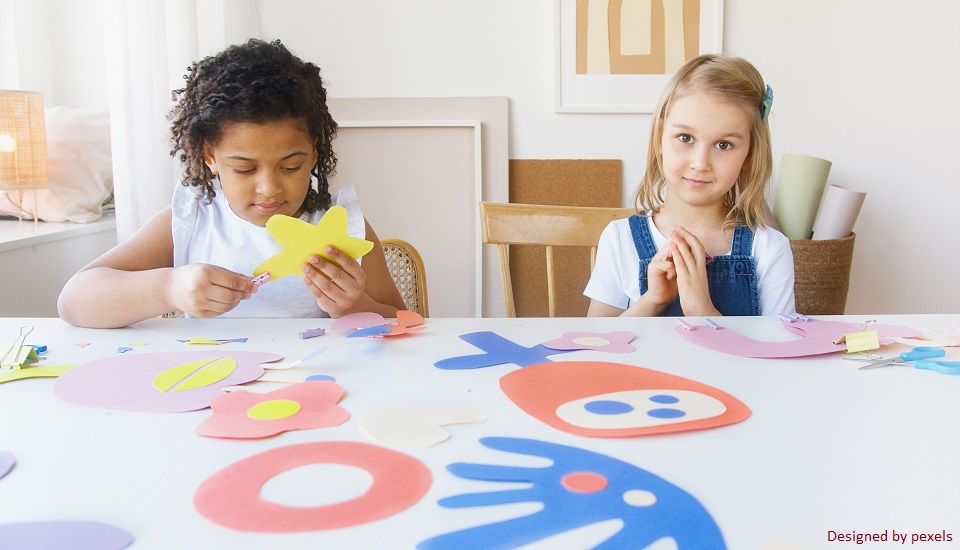Children start learning shapes from a very early age, be it inside our outside the classroom. By the time they are toddlers; most students can label items according to shapes. Developing shape skills in the initial stage can enable the kids to organize visual information. They can also identify similarities and differences between asymmetrical and symmetrical things in a classroom. Moreover, they can develop new language skills in the meantime.
Mastering shapes can have numerous benefits. From supporting early math learning to building spatial sense, shapes are the basic skill that every child must learn. If you are wondering how to build shape skills to foster real-world learning, here are five ways.
5 Ways To Build Shape Skills In A Child
Here are 5 activities that can be conducted in a classroom to develop shape knowledge:
1. Shapes Vocabulary
Before, going in with activities, it is important to teach different shapes of vocabulary to the kids. In a special education classroom, you need to be careful what you teach and should stick to basic shapes. Some of the easiest shapes to teach would be square, circle, triangle, rectangle, star, and diamond. Once you have figured out which shapes to teach you can then prepare your craft sheet before class.
Cut out the shapes from a sheet of paper and start off by showing the shapes and chorusing the names. Hand the shape to one student and ask them to pass it on while repeating the shape name. After a while, you can also elicit sizes and colors like "a small green circle" and "a big red square" etc.
2. Art And Craft
Once you have made them aware of the various shapes, you can introduce fun activities to practice them. Depending on the learner's age group you can decide on your activities. Some of the fun activities can be block painting. Here your students take the shapes and dunk them in paint to make shapes on a sheet of paper.
You can also engage your kids in creative and fine motor skills by asking them to make simple paper shape art. Help them cut various shapes and glue them to create a house, flower, sun, car, etc. Use this activity to induce new vocabulary and make them learn several things simultaneously.
3. Guessing Games
Guess the shape is an engaging and simple game for shape recognition. There can be several activities you can conduct to play this game. For example, you can ask your students to cut various shapes and put them in an opaque bag or box. Once, the shapes are inside a bowl or box, call out each student to volunteer. Ask them to put their hands in the bag and pick one shape. Without taking it out from the container they need to describe the attributes of the shape by feeling them. Like how many sides can they feel, are the sides similar to each other or different, etc?
Alternatively, you can also arrange big cardboard with various shapes cut out. Hand your students a mix of all the shapes and ask them to guess and fix the correct shape on the cardboard. Continue until all shapes are filled and ask them to name each shape that they have identified correctly.
4. Memory Games
Memory games are excellent for teaching vocabulary. You can also practice word recognition, spelling, listening, and reading skills. To conduct this activity you can mix a lot of different shapes in a box and divide the class into groups. Allow each group 30 seconds to 1 minute time to look at the box and recognize the shapes.
After a minute ask them to go back to their places and note down as many shapes as they remember seeing the box. The group with the maximum number of shapes wins the challenge. These games not only help them learn better but also boost healthy competition.
5. Flashcard Activities
Using flashcards is one of the easiest ways to teach shapes to your kids in a classroom. However, just holding the cards and asking them to identify the same can be a little monotonous and boring. Instead, you can try out innovative activities with these cards. For example, you can ask your kids to identify and group all the similar shapes.
For this, you will need at least 3 copies of the same shape. Lay out all the flashcards on the floor where your students can clearly see them. Pick out one shape and ask your kids to first identify the shape. Once they can name it ask them to find similar shapes from the mix of shapes and group them. When your kids have grouped all the shapes correctly, congratulate them to motivate them.
The Bottom Line
Working with shapes can be a little tricky for young minds especially if they are students with special educational needs. Thus, to teach them better you can consider pursuing Special Education courses for a positive learning environment. Shapes knowledge can help children master mathematical concepts and spatial knowledge. When done with activities it can develop their cognitive and fine motor skills.
Leave a comment!
Written By : Abhishek



